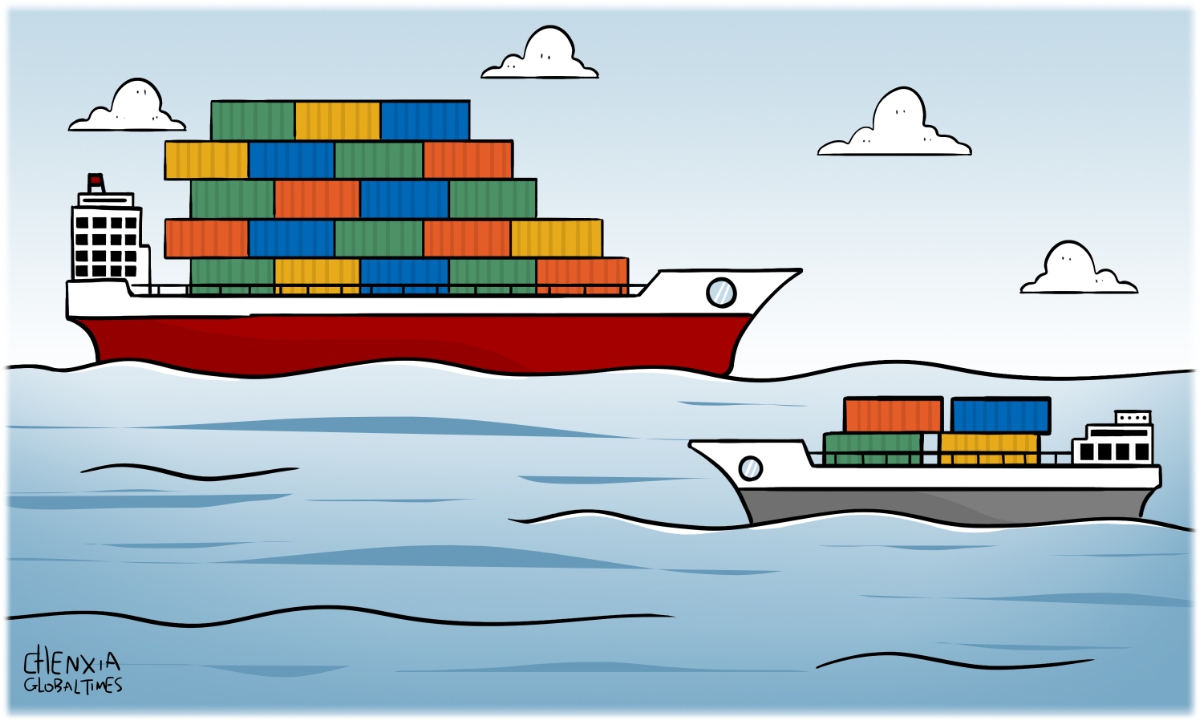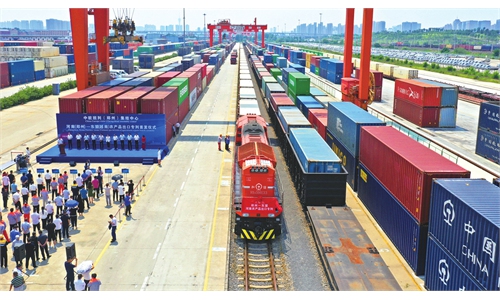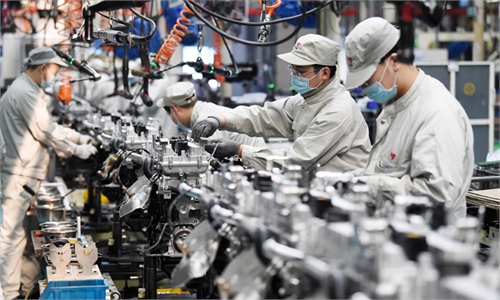
Illustration: Chen Xia/Global Times
Vietnamese Prime Minister Pham Minh Chinh will attend the 15th Annual Meeting of the New Champions in Dalian, the Chinese Foreign Ministry announced on Friday. According to the Vietnamese government, he is set to pay a working visit to China from Monday to Thursday and attend the forum during his trip.This visit represents the latest development in a recent series of high-level exchanges between China and Vietnam, underscoring the deepening exchanges and cooperation between the two nations.
Amid the complex global economic and geopolitical landscape, Vietnam, a significant economy in Southeast Asia, has emerged as a proactive and influential player in the global industrial chain. Its growing stature has not only captured the interest of the international community but has also positioned it as a key pivot point for major powers vying for collaboration and influence.
Russian President Vladimir Putin visited Vietnam last Thursday, and the two sides signed a number of agreements on issues including energy. Shortly thereafter, US Assistant Secretary of State for East Asia and Pacific Affairs Daniel Kritenbrink also visited Vietnam, and said that the trust between the two countries was at an "all-time high," according to AP. These visits have significantly raised Vietnam's profile on the international stage, underscoring its importance in the global geopolitical and economic landscapes and bringing it more diplomatic and economic opportunities.
Against this backdrop, some Western media outlets have constantly taken every opportunity to play up companies diversifying their supply chains away from China to Vietnam, suggesting an industrial competition between the two nations.
In particular, during US President Joe Biden's visit to Hanoi last year, the US-Vietnam relationship was elevated to a comprehensive strategic partnership. During a trip to Vietnam in July 2023, US Secretary of the Treasury Janet Yellen called the nation a key partner in expanding green energy sources and building more resilient supply chains in Washington's "friendshoring" drive, with the view of reducing dependence on Chinese supply chains.
In this context, how China and Vietnam deepen cooperation, particularly in the integration of their industrial chains, is of great importance to the two nations and regional economic development.
For starters, the ongoing trend of industrial chain connectivity and collaboration between China and Vietnam is expected to persist despite any external influences. This is due to the significant complementarity between the two countries in terms of technology transfers, market development and overall industrial integration, which serves as a strong driving force for their economic development.
Also, the close geographical proximity of Vietnam and China naturally facilitates logistics and trade, leading to cost reductions and efficiency improvement in their industrial chains.
The US is Vietnam's largest export destination, with exports to the US comprising a significant portion of Vietnam's trade. Despite this, a considerable amount of intermediate and raw materials used in Vietnamese exports to the US is sourced from China. Consequently, Vietnam's strengthened trade relationship with the US still relies heavily on its imports from China, particularly for mechanical equipment, intermediate products, and raw materials.
The US originally aimed to restructure the industrial chain and supply chain by shifting production to Vietnam and other countries in order to contain Chinese manufacturing. However, this strategy has instead made Chinese manufacturing expanding its industrial chain more actively, enhancing its overseas connectivity, and solidifying the global presence of Chinese manufacturing.
China can continue to foster strong partnerships with Vietnam across multiple sectors. For instance, in the realm of supply chain collaboration, despite American initiatives and investments in the semiconductor and artificial intelligence industries in Vietnam, China's expertise in new energy presents opportunities for enhanced cooperation with Vietnam in the decarbonization sector, further solidifying collaboration on sustainable supply chains.
Furthermore, the two countries can expand cooperation in infrastructure construction, energy and resource development, the digital economy, and other sectors, fostering closer economic ties and mutually beneficial partnerships.
Additionally, deepening trade and investment cooperation is another crucial aspect of China-Vietnam collaboration. By signing more trade and investment agreements, reducing trade barriers, facilitating capital flows and enhancing cooperation between their companies in the industrial chain, China and Vietnam can both benefit and achieve win-win outcomes.
In conclusion, it is crucial for China and Vietnam to strengthen their collaboration in supply chain management, technical cooperation, market expansion, and policy communication to ensure sustainable and mutual growth amid challenging geopolitical pressures and external competition.



